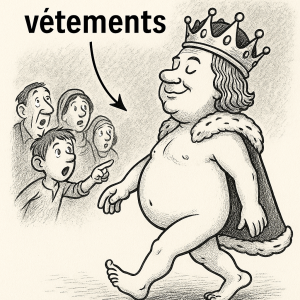by Dennis Crouch
Earlier in 2025, the Federal Circuit affirmed a TTAB’s refusal to register VETEMENTS (both standard-character and a block-letter stylization) for clothing and online retail store services for clothing. Pardon my French, but the problem here is that “vêtements” directly translates into "clothing" -- rendering the word generic for goods and at least highly descriptive for clothing related services. In re Vetements Group AG, 137 F.4th 1317 (Fed. Cir. 2025). The case falls under the "Doctrine of Foreign Equivalents" (DFE) which the court was careful to characterize as a guideline rather than a firm rule. Here, the Federal Circuit applied the guideline and concluded that an "appreciable" number of American consumers would likely "stop and translate" the word and recognize it as generic to the goods in question.
Vetements has now filed a petition for certiorari asking the Court to decide, first, whether protectability of a non-English mark should turn on consumer perception of the mark as encountered (without translation) or on its English translation; and second, what the proper test is for genericness or descriptiveness of non-English marks. The petition frames the Federal Circuit’s approach as inconsistent with Menendez v. Holt, 128 U.S. 514 (1888), and the “bedrock” consumer-perception principle reiterated in USPTO v. Booking.com, 591 U.S. 549 (2020). The petition also highlights divergent approaches among the circuits and the TTAB. Vetements Grp. AG v. Stewart, No. 25-215 (U.S. Aug. 19, 2025) (petition for cert. filed).
To continue reading, become a Patently-O member. Already a member? Simply log in to access the full post.
